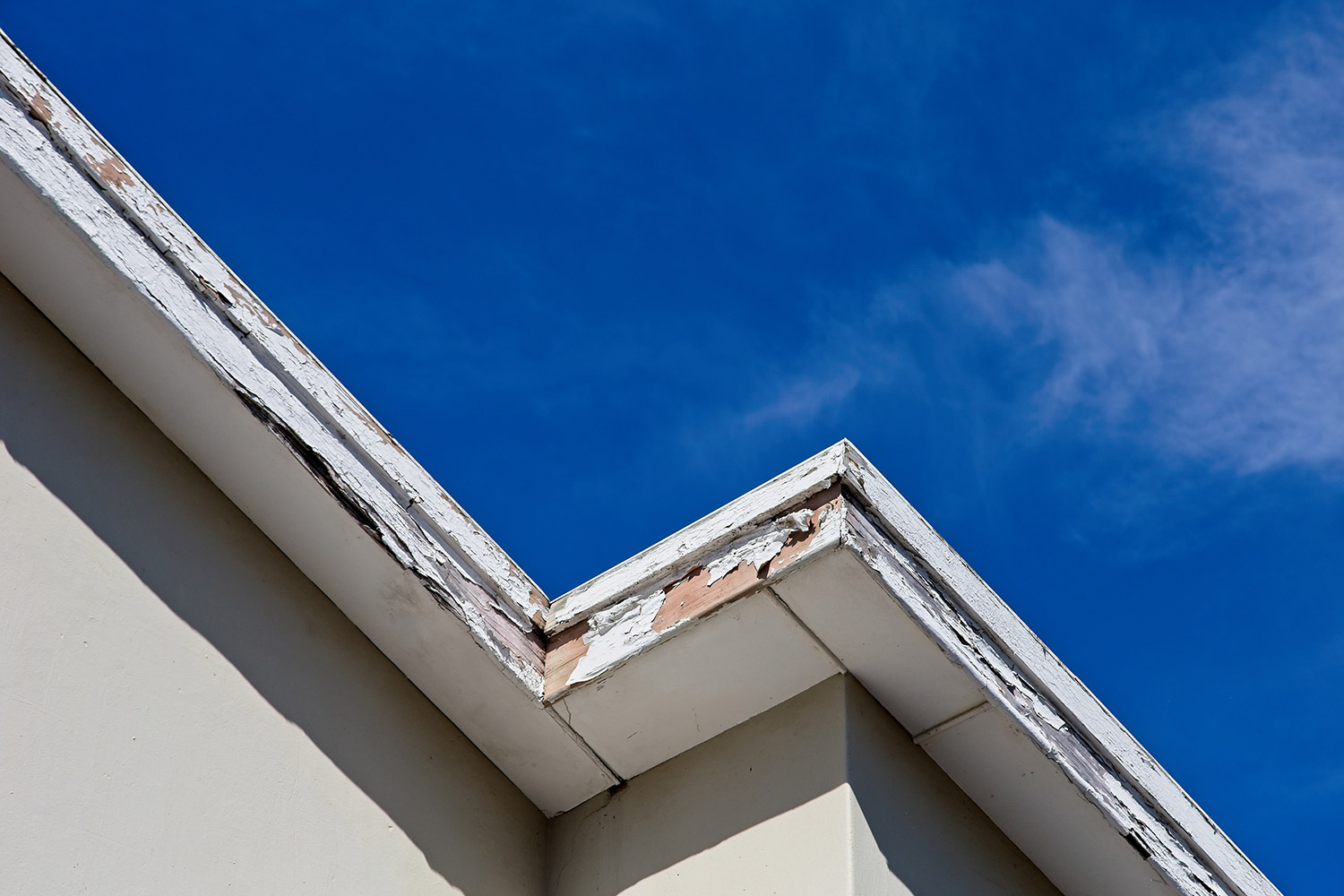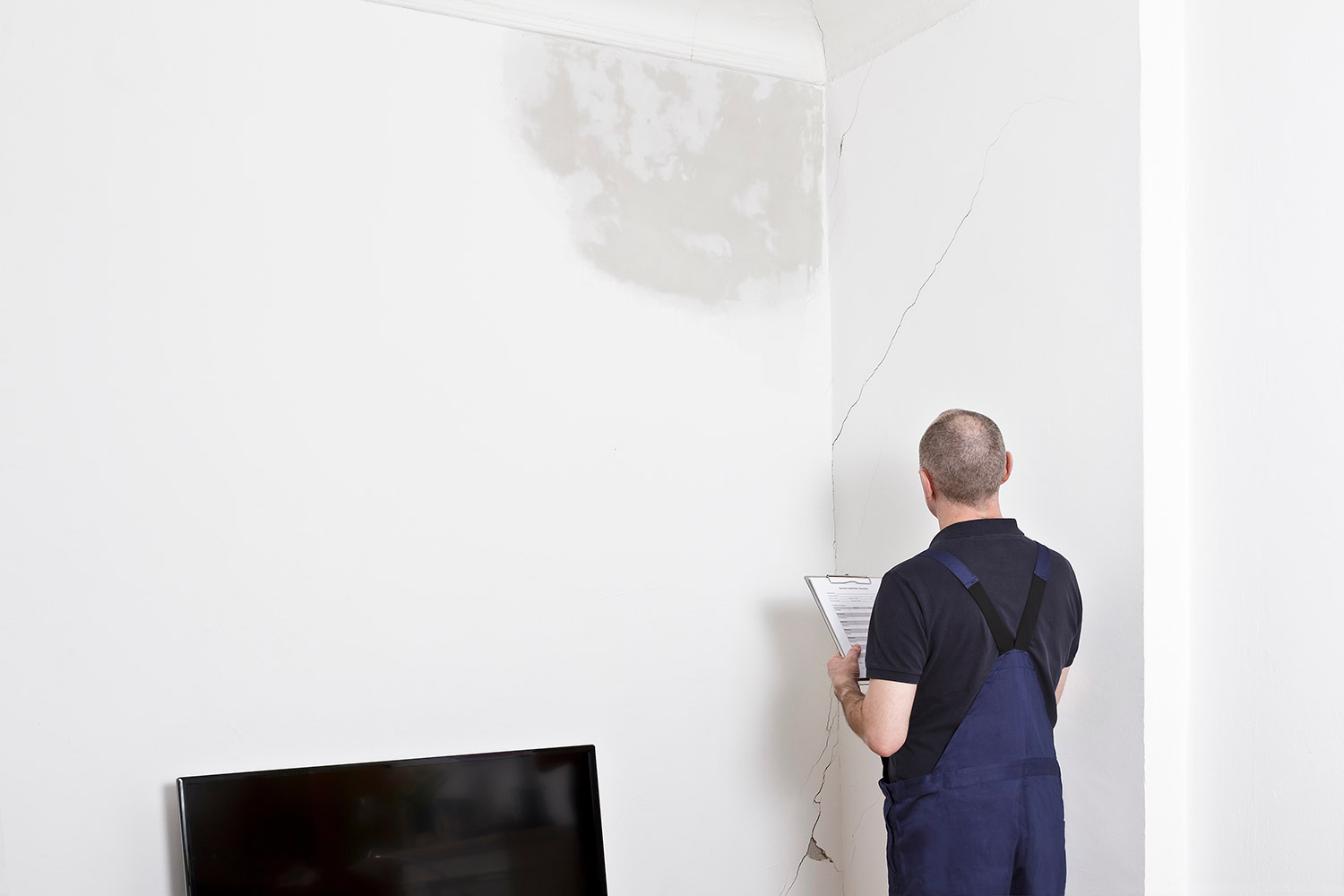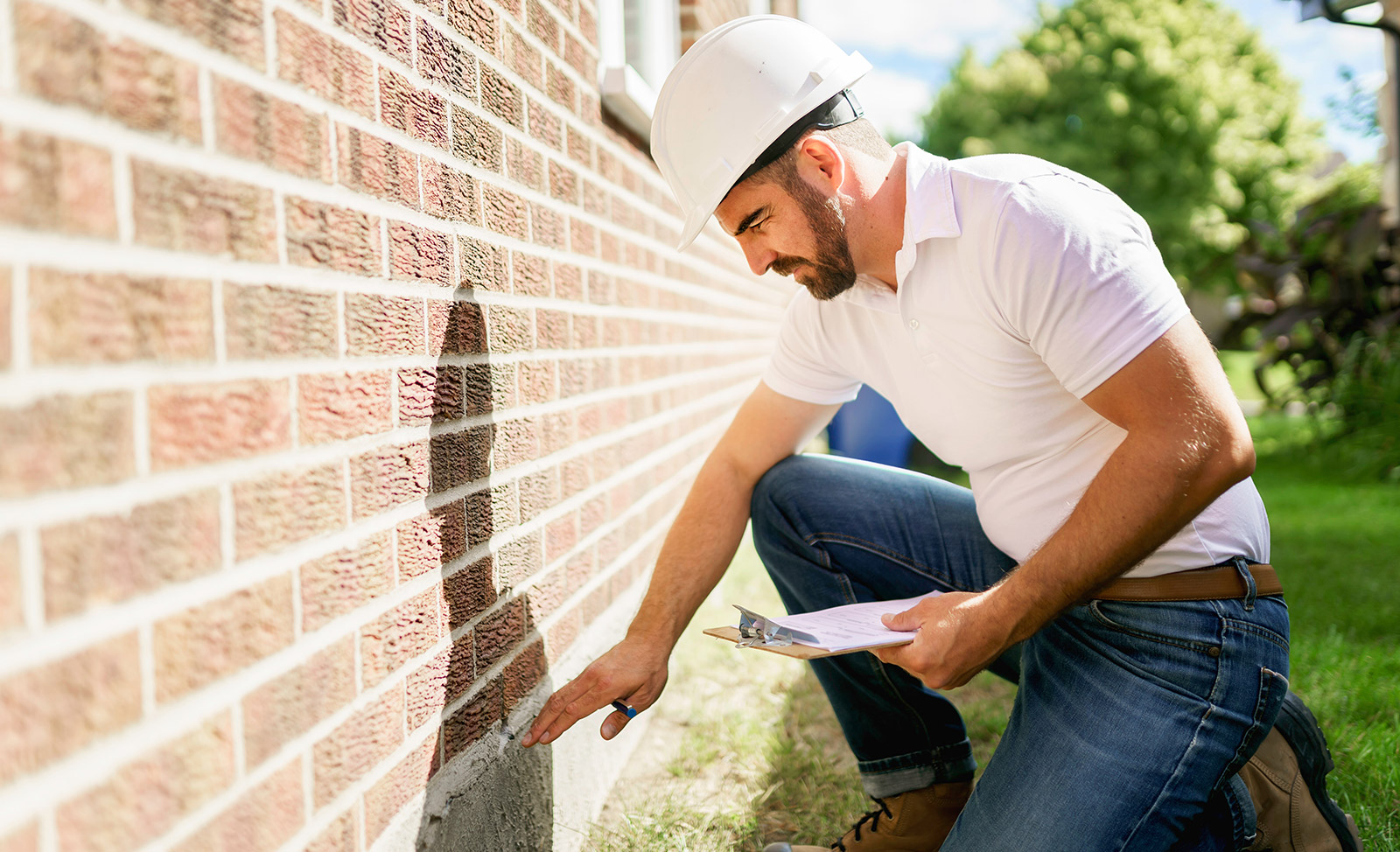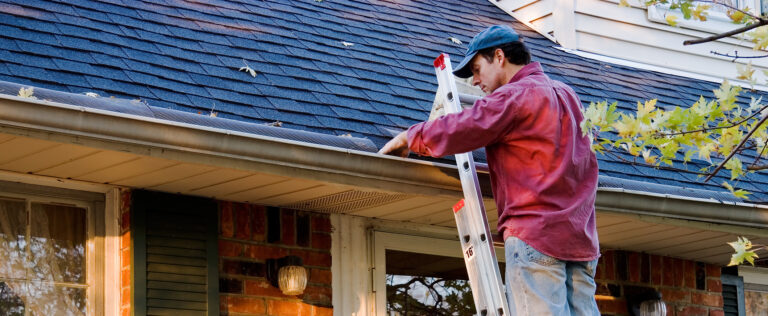First-Time Home Buyer’s Checklist: What To Look for When Buying a Home
So, you’re planning to buy a house. Let us be the first to say congratulations! Buying a home is an exhilarating and rewarding experience. But it can also feel a bit overwhelming. This is one of the biggest investments you’ll make and shouldn’t be done lightly. Before you sign your name on the dotted line, there is a lot to consider, especially for first-time buyers.
Whether buying a new build or an existing home, we want your homeownership journey to be as exciting and fulfilling as possible. Using our decades of experience working with contractors, home inspectors, specifiers and more, we’ve compiled a little home buyer’s checklist and inspection guide so you can buy with confidence.
Please remember that this article is meant to provide advice for new home buyers only and is not a substitute for legal or financial advice. It should also not be considered a complete guide to home inspections. No home is perfect, and issues will undoubtedly arise. The goal is to provide you with enough information to help you make an informed decision. We’ve broken down our home buyer’s checklist into the following steps, which will be discussed in detail below:
- Viewing the Home:
- Getting a Home Inspection.
- What a Home Inspection Isn’t.
- Can a Home Fail an Inspection?
- Hiring a Home Inspector.
Viewing the Home
Viewing a home is one of the best parts of buying a home. While it can’t tell you everything you need to know when buying a house, it’s a great place to start. The trick is to know what to look for. To help make the best decision possible, here are some inspection tips for new homeowners to consider when viewing a home.
Roof
The roof is the first thing you should look at when approaching a potential home. From the ground, inspect the state of the shingles. See if they are curling severely, if any are missing, or if any areas look completely worn out. Curling shingles aren’t necessarily a sign that the roof is leaking, but they could indicate that the roof may have to be replaced sooner than you’re prepared for. Also, check to see if any areas appear to be buckling. This could mean water has infiltrated the roofing deck, affecting its dimensional stability and possibly its structural integrity. Keep this in mind when inspecting the attic and see if you spot any signs of water damage.
Check for algae or moss growing on the roof, or mold in the attic. This can appear as dark, white, green, or black patches and can indicate poor ventilation and/or water leakage. Also, look around and see if there are any overhanging trees touching or sitting extremely close to the roof, as this may cause issues in the future.
If you’re looking at a semidetached home, inspect the neighbor’s roof as well. When talking to the seller, ask them how old the roof is, if it’s been replaced and why.
Gutters and Drainage Systems
While you’re there, look at the roof’s drainage system. Gutters and downspouts should capture and direct runoff away from the house, protecting it from water damage. Take a walk around to see if you can spot any gaps or breaks that would cause water to run down rather than away from the house. If the fascia (the board beneath the gutters) is damaged or degraded, that could mean the gutters are frequently clogged. Damaged fascia can also cause leaks and allow animals to get in.

Check to see if the downspouts have an extension. A downspout without an extension may cause water to pool, causing soil saturation, which can damage the foundation. All downspouts should have an attachment to carry water safely away from the house.
Foundation
Inspecting the foundation can be tricky as it’s usually covered up externally by soil, decks, porches, etc., and internally by drywall. However, there are a few ways to inspect its structural integrity. Look for any cracks in the walls, particularly around doorways or windows, and see if any doors or windows stick or jam. These may all be signs that the foundation has shifted. Remember, downspouts without an extension may also affect the foundation’s integrity. An unfinished basement will likely give you the best view of the foundation and reveal any cracks or water damage.

Bedrooms
When inspecting the bedrooms, the first thing to consider is the size. Take note of window placement. Will there be a lot of natural light? Is there enough privacy? Walk from each bedroom to the bathroom to get a feel of how far it is and check all light switches. Check the ceiling and walls for any water damage. Finally, scan the room for outlets. We use a lot of devices nowadays, so having multiple outlets within reaching distance will make all the difference in the world. Do you really want to get out of bed every time you have to plug your phone in?
Living Room
As you did in the bedrooms, consider the size, windows and outlet placement when walking through the living room. Try not to get too wrapped up in the current décor. Instead, consider the style and layout. Will your existing furniture work? Take pictures of your current living room layout and use them as references. Also, like in every room, test all electrical outlets and switches to ensure they work correctly. An easy way of doing this is by using your phone charger. Also, be sure to check for any water damage.
Kitchen
The kitchen is where you’ll move around the most, sometimes holding hot pots and pans, so you want to make sure you can do so easily and safely. Play out your typical routine a few times to get a feel for the space. Counter space is king in any kitchen, so you’ll want to ensure you have enough for appliances, cooking and prep work. To check the plumbing, let the water run and look under the sink to see if there are any leaks. Once again, test all electrical outlets and switches to make sure everything works.

Bathrooms
You’ll want to make sure everything in the bathroom is watertight and in working order. Test the faucets, toilet, and shower. To check the water pressure, turn on the faucet and flush the toilet. If the water flows uninterrupted, that usually means the water pressure is good. Check under the sink and around the toilet for leaks, water damage, or mold. Make sure there is a working exhaust fan. Bathroom fans help reduce odors, improve air quality, and remove moisture and humidity that can cause mildew, mold, and structural damage.
Basement
Basements are like a box of chocolates: You never know what you’re going to get. Nowadays, most basements are finished. However, it’s not guaranteed. If the basement is finished, inspect it like you would the main floor, being especially vigilant for any signs of water damage as this is where it’s most likely to occur. If it’s unfinished, you’ll get a clear view of the foundation, plumbing, floor/ceiling joists and wiring. The basements of older homes were often used for cold storage and may not be set up for HVAC, making them cold in the winter and humid in the summer. So, keep this in mind when viewing.
In the end, it comes down to personal preference. A finished basement provides more room and is great for kids. However, if you’re only using it for laundry/storage, you may not care if it’s unfinished. Plus, an unfinished basement is a great blank canvas for you to create your own space.
Getting a Home Inspection
A home inspection is an in-depth visual examination of a home, from the roof down to the foundation. Home inspectors are trained to see what others can’t, identify potential issues, and save you tens of thousands of dollars in repairs and renovations down the line. A home inspection should consist of, but is not limited to, the following:
Roof:
A home inspector can get up on a roof to look closely at the state of the shingles, flashing and ventilation systems. Many new homeowners believe that seeing excessive granules in the gutters is a sign that the shingles need to be replaced, but that isn’t always the case. All shingles, including IKO’s performance shingles, are engineered with extra granules to ensure complete coverage of the shingle’s asphalt weathering layer. So, having a few of those extra granules in the gutters isn’t necessarily a cause for concern. However, a qualified home inspector can get on the roof and see if the shingles have been worn down so much that the base layer is showing. This is a sign that the shingles may need to be replaced. While up there, they can also inspect the gutters to see if they are clogged or need to be replaced.
Attic:
Here, a home inspector can further examine the underside of the roof deck, the attic’s ventilation system and insulation. Adequate ventilation, in conjunction with vapour barriers and attic insulation, helps maintain the home’s temperature and moisture levels. They can also help prevent the formation of ice dams in the winter. A home inspector should check all roof intake and exhaust vents and the type of insulation used and should recommend whether or not the attic insulation levels should be increased. A properly ventilated and insulated attic can save you hundreds on your energy bills.
HVAC:
Most of us are unfamiliar with HVAC systems. A home inspector will be able to tell you how old the home’s furnace and duct system are, whether they’re working properly and if there are any leaks. Depending on the home, they should also check the air conditioning unit.
Electrical and Plumbing:
While you can check all the outlets and switches in the home, a home inspector can check the wiring. They can determine its age, if it’s been done properly and if there are any fire hazards. They will also inspect the circuit breakers to ensure everything is up to code and installed correctly. They’ll check all visible plumbing, including the water heater, for leaks or signs of degradation.
Floors, Ceilings and Foundation:
A home inspector will look closely at the structural integrity of the home’s floors, ceiling, and foundation. They can pinpoint subtle signs of water damage, shifting, buckling and the quality of the craftsmanship, and can identify load-bearing walls. This can come in handy if you ever decide to renovate.
Doors and Windows:
Improperly sealed windows and doors allow for hot and cold air to escape, can make a room drafty and increase the chances of water infiltration. A home inspector can ensure all windows and doors keep the outside out and the inside in.
What a Home Inspection Isn’t
While a home inspection can provide great advice for new home buyers and give you a better understanding of the home, it’s important to remember that it is a visual inspection only. There are certain things a standard home inspection cannot always account for. Such as:
- Asbestos.
- Radon.
- Methane.
- Radiation.
- Wood-destroying organisms like termites.
- Extensive mold, mildew, or fungi.
- Pests and rodents.
- Lead.
- Sewer, septic and waste systems.
A home inspector will not enter inaccessible areas like locked or cluttered rooms. They also will not venture into any space that is deemed unsafe, such as steep roofs. Specialized inspectors are available for the above, but usually come at an added cost.
Can a Home Fail an Inspection?
No, a home cannot fail a home inspection. A home inspection only describes the home’s physical condition and anything that requires significant repair or replacement.
Also, a home inspection is not an appraisal and cannot affect the home’s market value. However, it can open price negotiations between you and the seller. You can also request repairs after a home inspection, though the seller may refuse.
Hiring a Home Inspector
Always hire an independent, fully licensed home inspector who is certified according to your region, state and/or province. If you’re buying a home in Canada, you’ll want an inspector licensed by The Canadian Association of Home & Property Inspectors (CAHPI). If you’re buying in America, you’ll want someone authorized by the American Society of Home Inspectors (ASHI).

The best action plan is to schedule a home inspection immediately after the Agreement of Purchase and Sale (APS) documents have been signed. You can also negotiate with the seller to include a home inspection as a condition in the APS. This will make the purchase of the home contingent on the outcome of the inspection.
We hope our beginner’s guide to buying a new home eases some of those first-time buyer jitters and helps you find the house you want to make a home.


